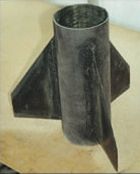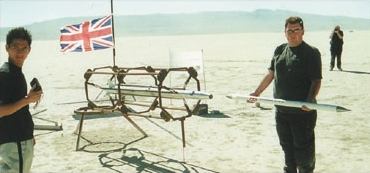Phobos EAV
The Phobos EAV project was conceived in June 2000 as the most audacious phase of the Phobos project, and with the aim of setting a new altitude record for a UK amateur rocket that would be so high that it would be unlikely to be broken for several years.
After work on the Phobos 3 vehicle had already begun, it was realised that for a moderate budget, MARS could use the same boosted dart design to achieve an extremely high altitude if the launch was made from a larger, foreign launch range. In addition to help from our sponsors, Mission Communications and PC Consultancy, seven members of the team committed their own money to the project, and agreed to make the trip to the chosen launch range; the Black Rock Desert in Nevada - scene of many land speed record attempts, including the Thrust SSC.
The team quickly settled on the Kosdon O-10,000 solid rocket motor as the propulsion system for the Phobos EAV project. The rocket motor was small diameter for its power, proven in several past launches, & provided the massive acceleration & short thrust that the boosted dart design needed. The Phobos EAV vehicle was based in shape & design on the "Super Loki Dart" vehicle used by NASA for low to mid altitude research. Simulations predicted that Phobos EAV should be capable of attaining an altitude in excess of 70,000 feet, & would achieve a top speed of around Mach 2.
continued > > >



